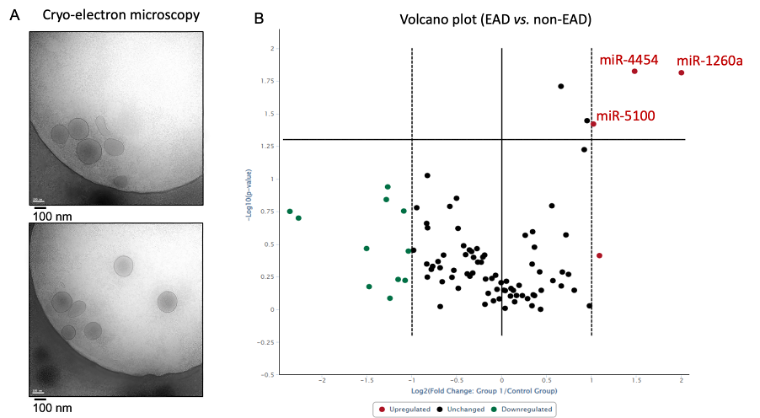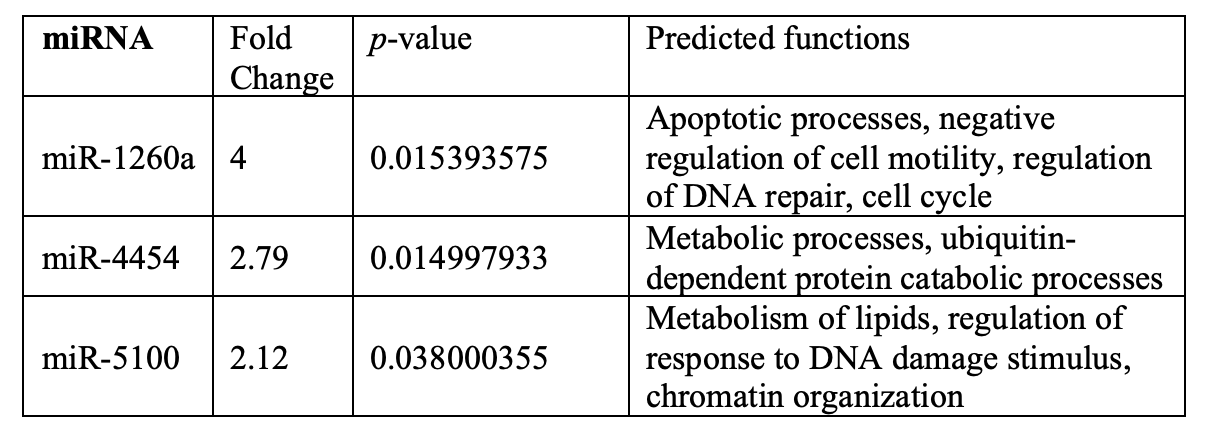Pretransplant microRNAs in liver perfusate associate with early allograft dysfunction
Elissa Bardhi1, Elizabeth Williams1, Jennifer McDaniels1, Thomas Rousselle1, Daniel Maluf2, Valeria Mas1.
1Department of Surgical Sciences, University of Maryland School of Medicine, Baltimore, MD, United States; 2Department of Surgery, University of Maryland School of Medicine, Baltimore, MD, United States
Introduction: Early allograft dysfunction (EAD) in liver transplantation (LT) is associated with poor long-term graft and patient survival. Prior to LT, while organs are stored or reperfused, they release uniquely packed EVs in response to ischemic conditions. Capturing the spill of EV-derived miRNAs into perfusate will allow for a better understanding of the early stress signals that culminate in EAD. To date, there are no established molecular biomarkers used in clinical decision-making in transplantation.
Methods: Perfusate was collected from 24 LT patients. EVs were quantified using TRPS and Imaging Flow Cytometry. Total RNA was isolated using the miRNeasy Micro Kit (Cat # 74004). MiRNA expression was evaluated using Human miFinder miScript miRNA PCR arrays (MIHS-116Z) which include 84 of the most abundantly expressed miRNAs and 12 control wells. To identify the differentially expressed miRNAs, △△Ct values were calculated by performing global normalization of each plate. In silico prediction of miRNA targets was done using the top 100 genes from miRDB and gene lists were analyzed using Metascape. EAD was defined by the presence of i) total bilirubin ≥ 10 mg/dL or INR ≥ 1.6 on day 7, and/or ii) ALT or AST > 2,000 IU/L within the first 7 days.
Results: Using 600μl of perfusate, we recovered an average of 1.5x108 EVs (images in Fig 1A). Three miRNAs (miR-1260a, miR-4454, miR-5100) were found to be overexpressed (p<0.05, FC≥2; Fig 1B) in the perfusate of LT patients who experienced EAD (n=4) compared to those grafts which functioned normally (n=20). MiRNAs were associated with metabolic processes and DNA repair (Table 1). Interestingly, the MELD score, a validated predictor of survival in patients with cirrhosis, was significantly lower in the EAD patients (p=0.006), showing an opposite trend than expected. No other donor/recipient characteristics were statistically significant between groups.
Conclusion: The presence of donor-specific EVs in perfusate evidences the capacity for these structures to facilitate intercellular and interorgan communication prior to LT. Perfusate miRNAs were also found to function as specific, noninvasive biomarkers assessing risk of EAD, even in the absence of significant clinical characteristics. Such findings further elucidate the pretransplant biological responses that influence LT outcomes, and may ultimately guide posttransplant management.



right-click to download
